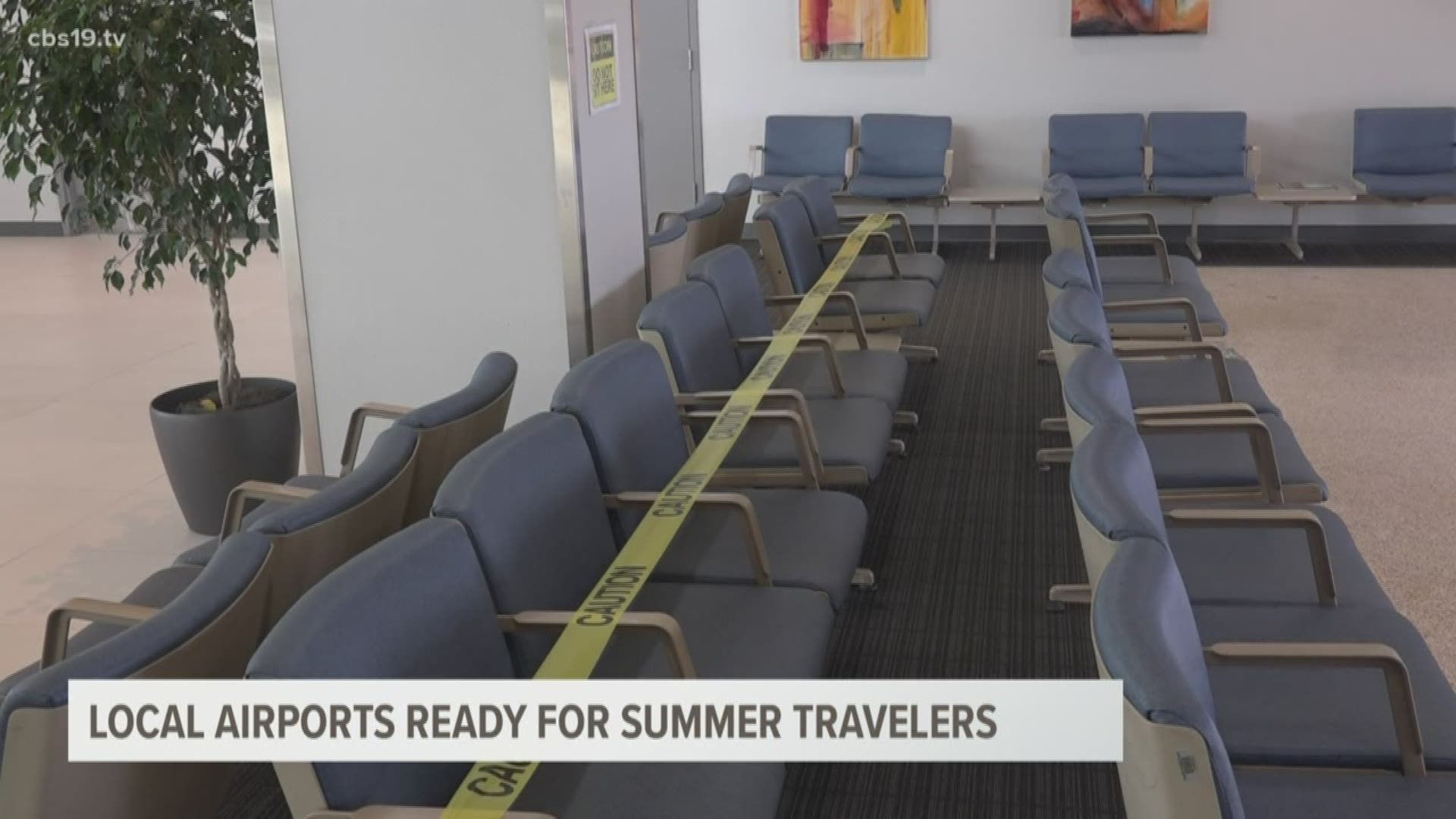LONGVIEW, Texas — After three months at home, many families are considering flying somewhere else during summer for a vacation.
Local airport operators say they are ready for any travelers who are concerned about their health and safety.
“It’s really pretty safe out here,” said Roy Miller, airport director for the East Texas Regional Airport. “We’re a controlled environment, so we don’t have a lot of the public in and out. So, we’re pretty safe, as far as COVID-19 is concerned.”
There are currently only two flights per day in and out of the airport, which serves Longview and Kilgore. Miller said his staff disinfects the airport between each flight. There are sections of chairs blocked off in the gate and concourse areas, as well as markings on the ground to help people stay six feet apart and hand sanitizer stations. Miller added that he is about to install Plexiglass sheets at the ticket counter to have a barrier between passengers and employees.
“On the convenience side, they don’t have to worry about a parking place,” Miller joked. “We’re down about 70%.
“We were down as low as 10-12 cars in the parking lot. Now, there’s quite a bit more than that. We had some flights go with zero people. There’s no flights going anywhere empty anymore. So, people are gradually becoming accustomed to flying again.”
Getting used to flying again is more noticeable at larger airports. Miller said East Texas Regional has not seen much of a bump related to the end of the school year, but the airports in Dallas have noticed a recent increase in traffic.
“Today, we were expecting more than 70,000 passengers,” said Bill Begley, a spokesman for Dallas Fort Worth International Airport. “There was a time when we were seeing maybe 10,000 passengers.”
DFW was the busiest airport in the country in May, far outpacing even Jackson-Hartsfield International Airport in Atlanta, which for many years has been the nation’s busiest. Dallas Love Field has also noticed an increase in travelers.
Chris Perry, the airport’s communications manager, said it felt like a ghost town at some points this spring, but that is no longer the case.
“A normal day is between 15,000-17,000, something like that,” Perry explained. “Right now, we’re seeing around about 4,000. So, it sounds like a substantial drop, but when you look at where we were at the end of April when we’re talking about more like 400-500, it’s definitely, people are moving about.”
Perry said that even though the concourse may feel relatively empty, flyers should still leave plenty of time to get to their gate.
"[There] will be a little bit longer lines, perhaps, at the checkpoint at times,” Perry mentioned. “You know, it seems weird to say there would be a longer line, because there’s less people. But the way we’re having to funnel people, it may feel like a long line or a slow-moving line.”
Begley and Perry said they expect a steady increase in the number of flights and routes available, though Perry said he is not sure if the number of passengers will increase much through the summer.
While masks are not required inside airports, several of the country’s biggest airlines said they are going to increase enforcement of their mask policies. Alaska, American, Delta, Hawaiian, JetBlue, Southwest, and United released a joint statement saying not only do masks remain mandatory for all passengers on their planes, but they will go so far as to ban someone from flying with them if they refuse to comply.
Shops at both DFW and Love Field sell masks, hand sanitizer, and gloves in case passengers did not bring their own. Both airports have additional cleaning crews to disinfect commonly-used surfaces and have installed new, touch-free equipment in their restrooms.
“We know the future of airports—probably the future of everything—is going more touchless,” Perry said.
However, Begley said the best way for passengers to keep themselves and their families safe this summer is to pay attention to their surroundings and their cleanliness.
“For all the things we’ve done to try to make DFW airport even more safe, there’s nothing that helps us and helps yourself out more than being aware of what you can do to ensure your own well-being," Begley said.
The Transportation Security Administration now allows passengers to bring up to 12 ounces of hand sanitizer in their carry-on luggage, and that will be the case as long as COVID-19 is still a threat. They are still limited to approximately three ounces of all other liquids.

